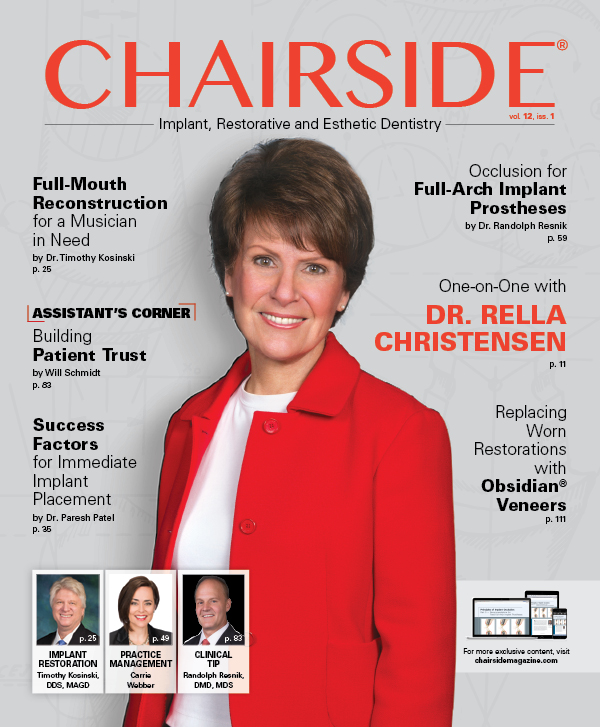BruxZir® Anterior: Monolithic Zirconia Engineered for the Esthetic Zone
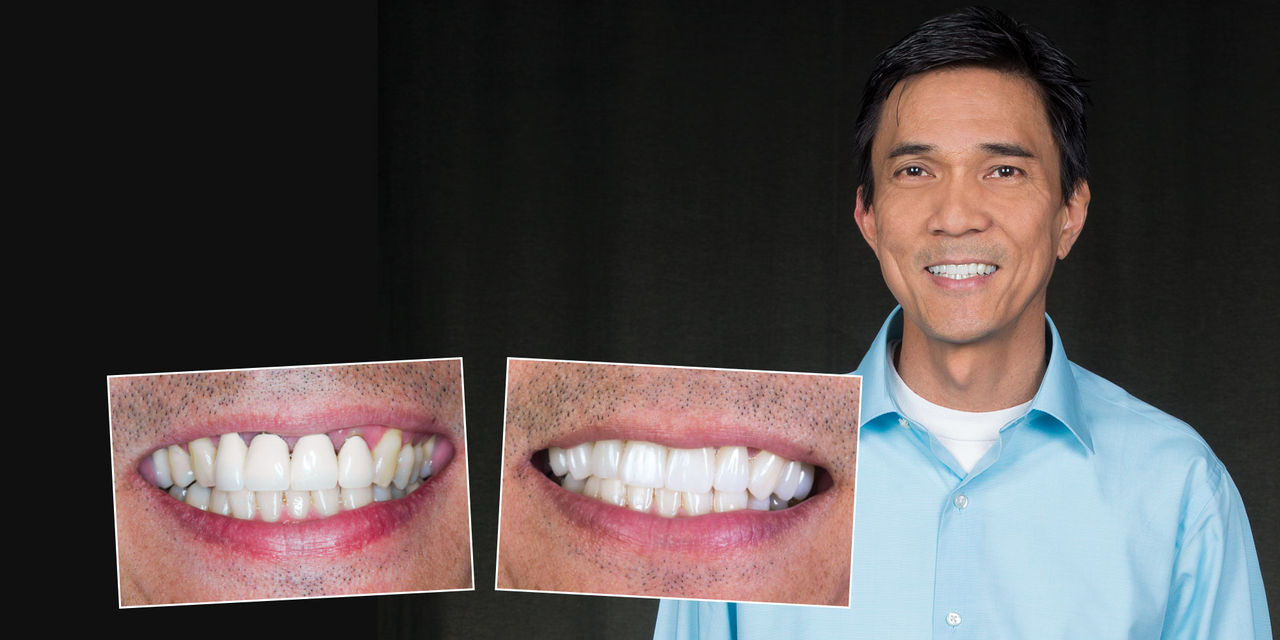
For nearly a decade, monolithic zirconia has served clinicians as a high-strength material option with esthetics far superior to those of other durable restorations, such as cast gold or metal-occlusal PFMs. Industry trends indicate that dentists clearly prefer metal-free restorations1, and zirconia in particular has earned a reputation in the U.S. as being a tough and affordable esthetic alternative.2
Since the launch of BruxZir® Full-Strength Solid Zirconia in late 2009, more than 14 million BruxZir restorations have been prescribed. This incredible acceptance rate stems largely from the long-standing need for a restorative material that exhibits brawn and beauty in a single package. And yet, while its unique blend of properties made BruxZir Full-Strength ideal for functionally demanding posterior restorations, the material lacked the lifelike translucency of traditional porcelain ceramics, and was thus limited as a restoration of choice for the smile zone.
The enthusiasm for BruxZir proved so great, however, that clinicians soon began requesting a zirconia specifically suited to the unique requirements of the anterior. To meet this demand, the Research & Development department at Glidewell Dental worked to increase the translucency of BruxZir zirconia while retaining the durability for which the material had become known. The result was BruxZir Anterior, a standalone formulation released in March 2015 that demonstrates lifelike esthetics, yet still boasts an average flexural strength significantly greater than that of competing glass ceramics, including lithium disilicate.
The cases that follow are representative of the dependable, natural-looking restorations achievable with BruxZir Anterior in the esthetic zone.
CASE NO. 1: REPLACING PFMS WITH BRUXZIR ANTERIOR CROWNS

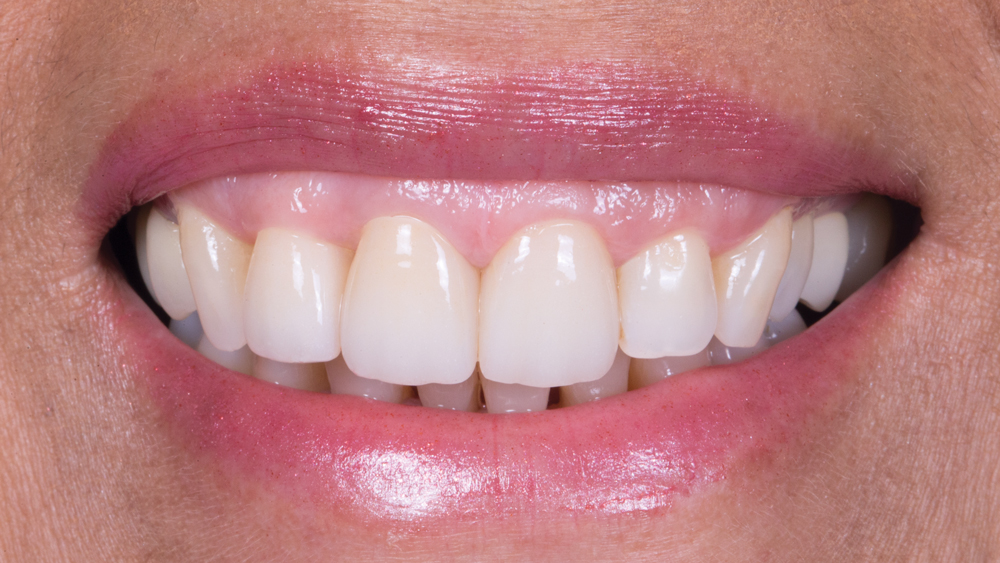
In this first case, the patient’s existing PFMs on teeth #8 and #9 were nonsymmetrical and contributing to gingival inflammation and recession. The PFMs on #7–9 were removed, and tissue contouring was performed with a diode laser to bring the gingival tissue into horizontal alignment. During the healing phase, the patient was temporized with BioTemps® Provisionals (Glidewell Laboratories; Newport Beach, Calif.) to further shape the tissue.
After two weeks of healing, the patient returned to the operatory and three BruxZir Anterior crowns were delivered. BruxZir Anterior restorations can be milled with walls as thin as 0.8 mm, enabling clinicians to prep conservatively and create virtually seamless transitions from crown to natural tooth. This, along with translucency that mimics that of natural dentition, makes BruxZir Anterior a great solution for areas with heightened esthetic requirements.
CASE NO. 2: COMBINING BRUXZIR ANTERIOR CROWNS AND VENEERS
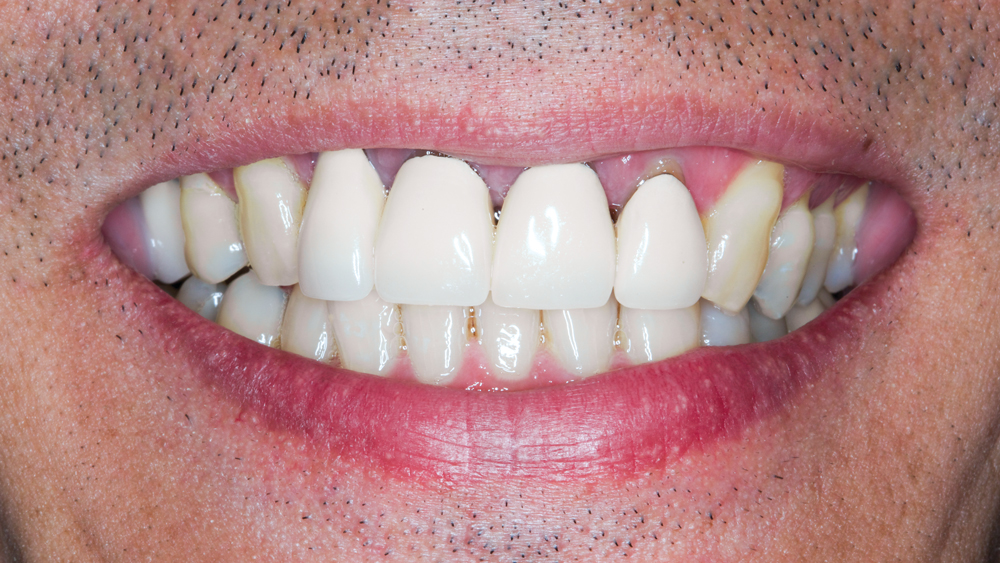
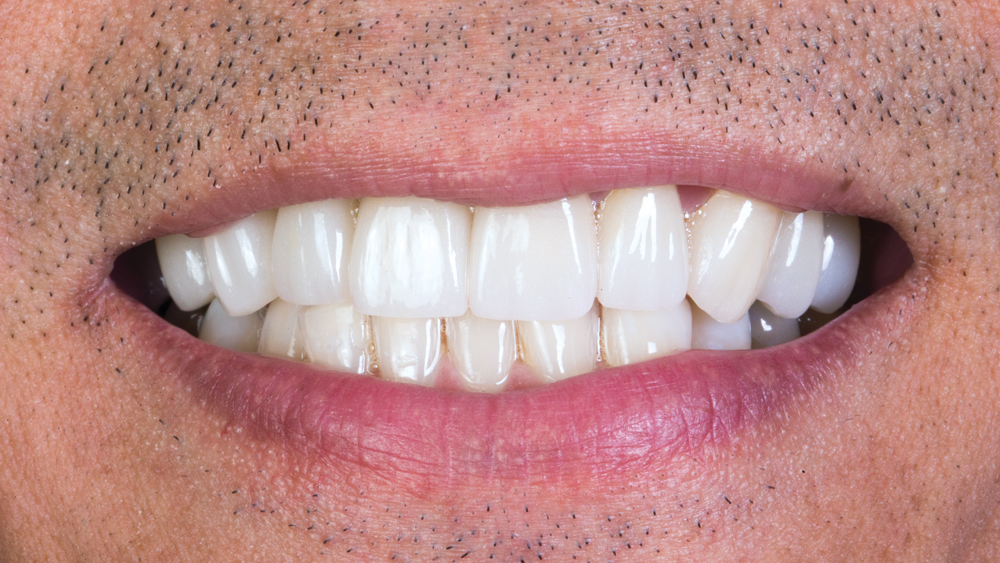
A combination of BruxZir Anterior crowns and veneers was implemented to restore the patient’s smile and meet his desire for an esthetic improvement. Crowns were placed on teeth #4, #7–10, #12 and #13, and veneers on #5, #6 and #11.
The restorative transformation gave the patient a natural-looking smile with increased marginal integrity. Esthetically, BruxZir Anterior crowns and veneers compare favorably with other all-ceramic options currently available, and have the added benefit of durability, with an average 650 MPa flexural strength.
The restorative transformation gave the patient a natural-looking smile with increased marginal integrity.
Monolithic zirconia veneers are a fairly recent development in dentistry, and many clinicians have questions regarding the ability to bond zirconia veneers securely. At Glidewell Dental, the Research & Development team conducted a study that evaluated the bond strength of zirconia veneers in relation to differing surface-treatment protocols. The study concluded that BruxZir Anterior veneers achieve a high bond strength when the intaglio surface is sandblasted with prior to cementation. This process actually changes the surface chemistry through the transfer of mechanical energy, as determined by the science of tribochemistry.3, 4
At Glidewell Laboratories, all BruxZir Anterior veneers are now sandblasted prior to leaving the lab. With that, clinicians can use a variety of popular cements at the delivery appointment to achieve a durable bond, including Multilink® Automix (Ivoclar Vivadent; Amherst, N.Y.), Panavia™ F 2.0 (Kuraray Dental; New York, N.Y.), and Variolink® Esthetic (Ivoclar Vivadent). For more details on bonding zirconia veneers, read Dr. Shreya Shah’s Clinical Tip article in this issue of Chairside® magazine.
CASE NO. 3: USING BRUXZIR ANTERIOR VENEERS TO CLOSE DIASTEMATA
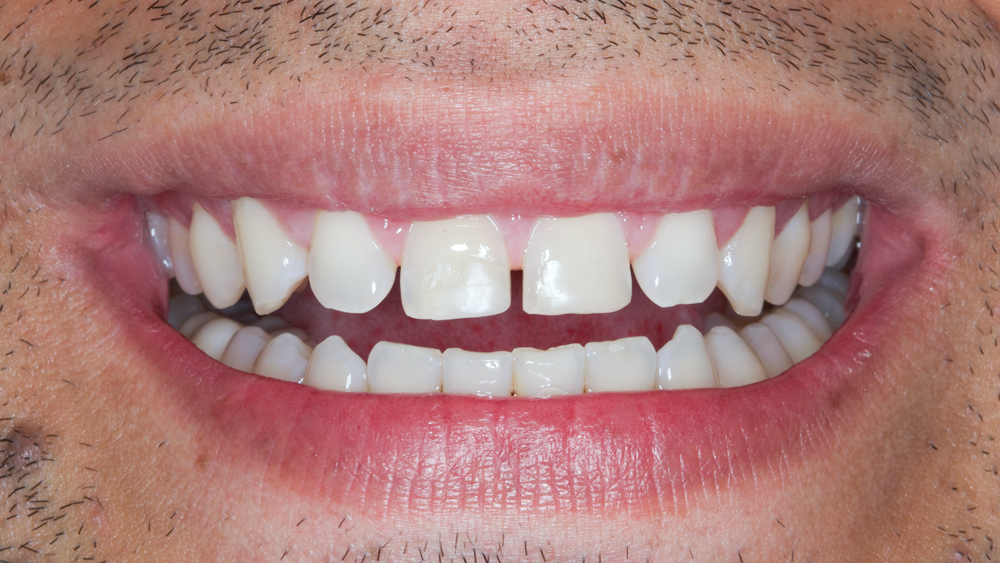
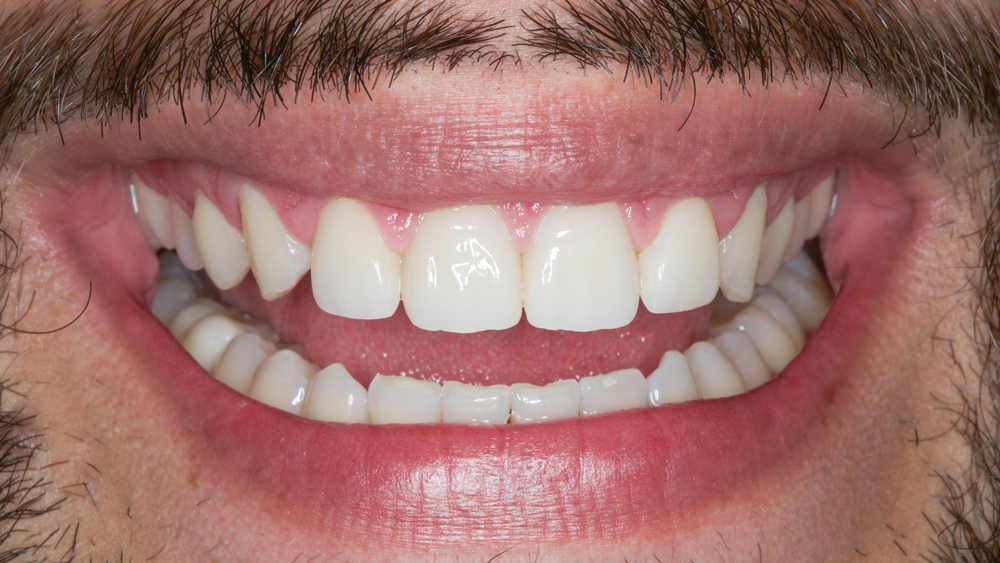
This patient wanted to close the multiple diastemata present between his maxillary anterior dentition. BruxZir Anterior veneers were bonded on teeth #7–10, significantly enhancing the appearance of his smile. The BruxZir Anterior formulation is available in shades that correspond to the VITA® Classical shade guide (VITA Zahnfabrik; Bad Säckingen, Germany), allowing restorations to blend well with the adjacent natural dentition. In this patient’s case, the combined shade and translucency of the BruxZir Anterior veneers created an exceptional result.
CASE NO. 4: RESTORING DISCOLORED DETENTION IN THE ESTHETIC ZONE
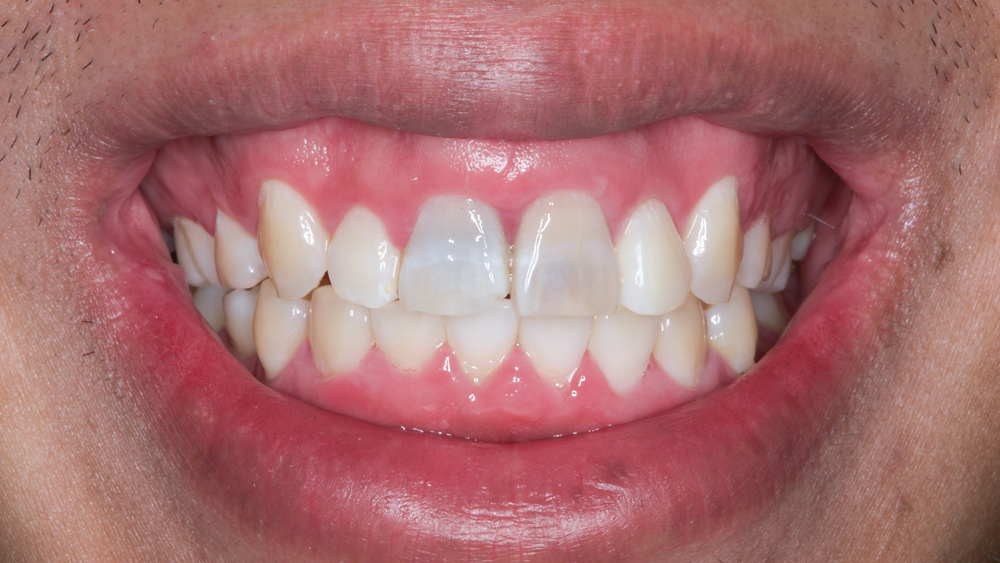

The patient had root canal therapy performed on teeth #8 and #9 a number of years ago. The unesthetic gray appearance compounded by the chipped mesial aspect of tooth #8 displeased the patient. The patient came to the operatory for treatment seeking a strong, more natural-looking smile. BruxZir Anterior crowns were delivered on #8 and #9 and BruxZir Anterior veneers were bonded to #7 and #10. The combination of BruxZir Anterior crowns and veneers presented an ideal restorative solution for this case due to their superior esthetics and monolithic composition, which greatly decreased the likelihood of fracture and chipping. Post-treatment, the patient exuded confidence with a vibrant smile.
CONCLUSION
As these cases demonstrate, BruxZir Anterior zirconia can be used to create restorations with strong margins, natural-looking coloration, and translucency that mirrors that of healthy dentition. Engineered to satisfy both the functional and increased visual requirements of the anterior, BruxZir Anterior is an ideal treatment solution for the smile zone, providing clinicians with great strength without sacrificing premium esthetics.
Engineered to satisfy both the functional and increased visual requirements of the anterior, BruxZir Anterior is an ideal treatment solution for the smile zone.
References
- ^ Sorensen JA. The Evolution and Revolution in Prosthodontics Continues. Compendium. 2016 Jun;37(6).
- ^ Translucent Zirconias: Tooth Reduction & Chairside Adjustment Issues. Gordon J. Christensen Clinicians Report. 2016 Jul;9(7):1-3.
- ^ Bottino MA, Valandro LF, Scotti R, Buso L. Effect of surface treatments on the resin bond to zirconium-based ceramic. Int J Prosthodont. 2005 Jan-Feb;18(1):60-5.
- ^ Valandro LF, Ozcan M, Bottino MC, et al. Bond strength of a resin cement to high-alumina and zirconia-reinforced ceramics: the effect of surface conditioning. J Adhes Dent. 2006 Jun;8(3):175-81.

